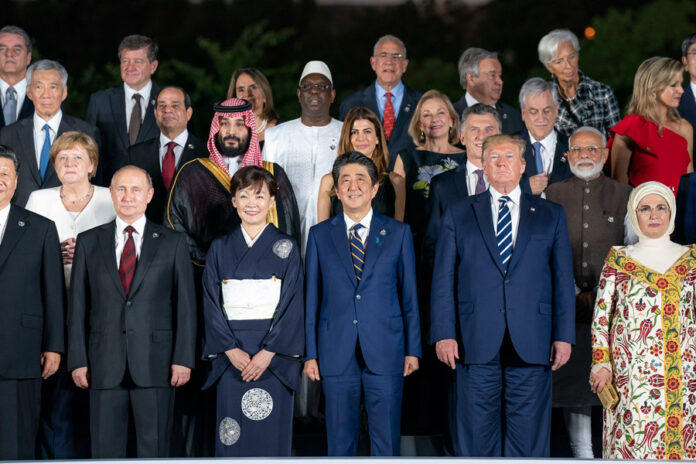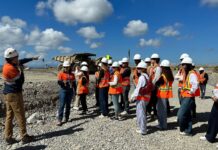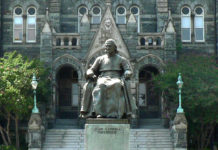![]()
Former Japanese prime minister Shinzo Abe was assassinated last Friday, shocking Japan and the world. As Japan’s longest-serving prime minister, Abe served from 2006 to 2007 and 2012 to 2020 before resigning due to health complications both times. He was one of the most transformative international figures in postwar history and his death is a great loss for all of the free world.
During his tenure, Abe sought to promote a liberal order and security in the Indo-Pacific through assertive diplomacy, economic leadership, and increased national defense. Understanding the long-term threat posed by China more than any other leader, Abe developed a long-term strategy for economic, diplomatic, military, and ideational competition with China years before the U.S. did, outlined in Japan’s 2013 National Security Strategy. Abe fought tirelessly for his vision of a “free and open Indo-Pacific (FOIP)”, which became shorthand for a regional framework that values “freedom, the rule of law, and the market economy free from force or coercion.” His efforts consisted of strengthening the US-Japanese alliance, staunchly supporting Taiwan, expanding Japan’s diplomatic ties with other like-minded nations, investing in multilateral diplomacy, and bolstering Japan’s defense capability.
Despite former President Trump’s unpredictability and criticisms of Japan at times, Abe worked patiently to cultivate a personal relationship with him. Abe was the first leader to meet Trump after the 2016 election; they “met 20 times, played 5 rounds of golf, and had 32 phone calls” according to the Center for Strategic and International Studies (CSIS), which allowed for a relationship unmatched by other foreign leaders. As a result, Abe was able to advocate for Japanese interests, particularly concerning North Korean threats. For example, Trump met with families of Japanese citizens abducted by North Korea while visiting Japan. Moreover, both the Trump and Biden administrations adopted Abe’s FOIP strategy.
Abe was arguably the most pro-Taiwan politician. Following the news of his assassination, Taiwanese president Tsai Ing-wen called Abe “Taiwan’s most loyal best friend.” When China interfered with vaccine shipments to Taiwan, Abe encouraged the Suga administration to quickly provide COVID-19 vaccines. He even bought Taiwanese pineapples when China banned importing them. Most importantly, he publicly urged the U.S. to end its strategic ambiguity and clarify that it would defend Taiwan in the case of a Chinese invasion. He said a Taiwanese emergency is a Japanese emergency and thus an emergency for the US-Japanese alliance. It is to no surprise that the Taiwanese people mourn the death of such a figure so greatly.
In addition, Abe increased Japan’s engagement with other nations in the Indo-Pacific. His first overseas visit in his second term was to Southeast Asia (Vietnam, Thailand, and Indonesia), a region which he visited frequently throughout his tenure. He strengthened maritime defense relationships with ASEAN countries like the Philippines, Vietnam, and Indonesia to deter Chinese aggression in the South China Sea, providing military, legal, and technical assistance. By ending a decades-old ban on arms export, Abe permitted the sale and lease of military equipment to improve Southeast Asian defense capabilities. Abe also funded quality infrastructure in the region to compete with China’s Belt and Road Initiative, securing 240 projects compared to China’s 210 by 2020. Furthermore, Abe strengthened relations with India and Australia. Under Abe, India became the top recipient of Japan’s Official Development Assistance including financial and technical aid to build high speed rail; the two countries additionally signed a civil nuclear cooperation agreement and conducted their first joint naval exercise. Similarly, Japan and Australia signed the Joint Declaration on Security Cooperation in 2007 and the Japan-Australia Economic Partnership Agreement in 2015. Overall, Abe went on a total of 89 diplomatic trips as prime minister, visiting over 170 countries and regions.
Simultaneously, Abe led various multilateral efforts in the Indo-Pacific, promoting a rules-based order in the region. After American withdrawal from the Trans-Pacific Partnership, he played a key role in reviving the agreement and completed the Comprehensive and Progressive Agreement for Trans-Pacific Partnership (CPTPP) among eleven countries to establish trading norms in Asia. Abe also secured G20 endorsement of his concept of “data free flow with trust” (DFFT) to enable the free flow of non-personal data, which the current Kishida administration seeks to realize in the next year. Additionally, he initiated the Quadrilateral Security Dialogue or the “Quad” comprising leading maritime democracies in the region: Australia, India, Japan, and the U.S. Though it started as an informal discussion, the Quad has developed into a “top-level strategic cooperation” and is projected to continue working closer together. Georgetown Professor Michael Green said the Quad is “a flexible tool,” making it easy for other countries to cooperate with them; it is thought that South Korea, New Zealand, and the U.K., for example, could join in the future.
Lastly, Abe worked to expand Japan’s defense capabilities. The constitution of Japan, which it adopted in 1947 during the Allied occupation period, greatly limits Japan’s military power. Article 9 in the postwar constitution “[renounces] war as a sovereign right of the nation and the threat or use of force as means of settling international disputes” and guarantees that “land, sea, and air forces, as well as other war potential, will never be maintained.” Because this effectively bans the possession of any kind of “war potential”, the Japan Self-Defense Forces (JSDF) are strictly limited to self-defensive operations. In 2014, the Abe administration reinterpreted the antiquated Article 9, ending the ban on collective self-defense. The use of armed force is now allowed not only when an armed attack against Japan has occurred but when “an armed attack against a foreign country that is in a close relationship with Japan occurs and as a result threatens Japan’s survival.” Abe also addressed decades-long institutional deficiencies and established Japan’s National Security Council to enable more effective and flexible top-down national security decision-making. He continued to advocate to bolster Japan’s defense even after his tenure, suggesting to raise defense spending to over 2 percent of GDP within the next five years and consider new options like a nuclear-sharing agreement with the U.S. Unfortunately, Abe did not accomplish his goal to revise the Constitution, particularly to add a clause in Article 9 specifying the presence of the JSDF. With the ruling coalition securing a supermajority in the parliament following the election two days after Abe’s assassination, prime minister Kishida has vowed to complete Abe’s unfinished business including constitution revision and the return of Japanese abductees from North Korea.
“Japan is back. Keep counting on my country,” Abe said in his 2013 speech at CSIS; these words would ring increasingly true during his years in office. He brought Japan to new heights, demonstrating its ability as an international leader and champion for the liberal order in his envisioned free and open Indo-Pacific. Though his extraordinarily influential and charismatic leadership will be missed, Abe’s legacy will live on without a doubt.












